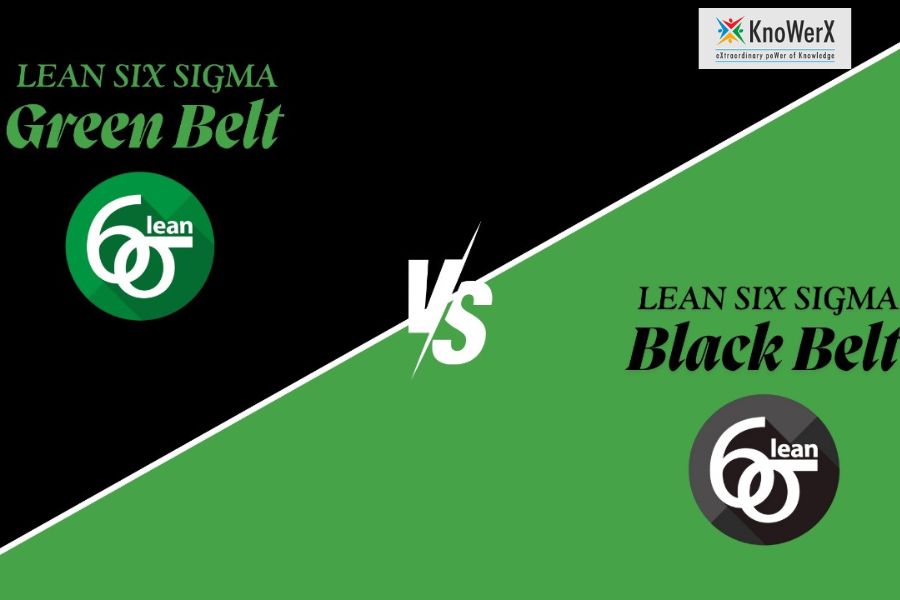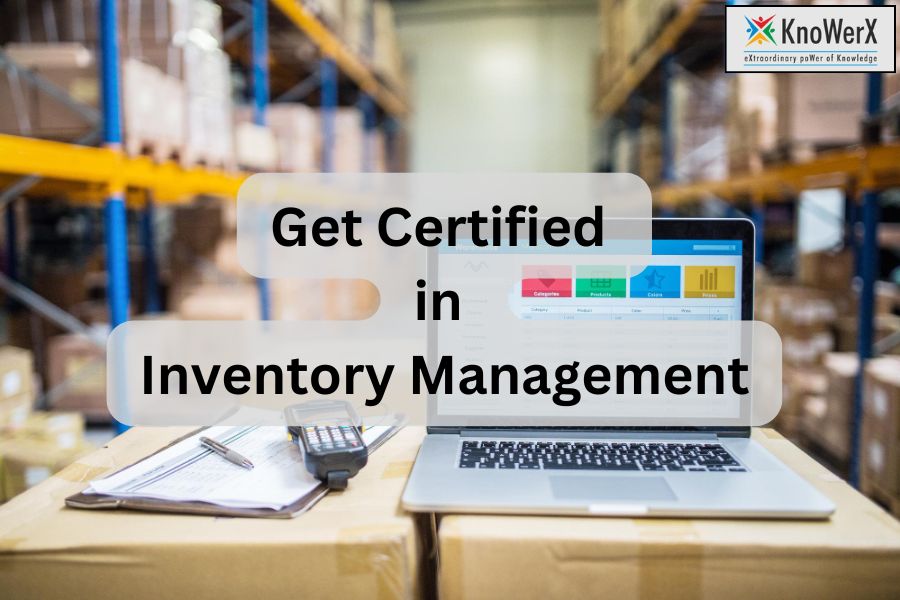Operational Strategies in SCM: The Hidden Risks You Can’t Ignore

Operational Strategies in SCM: The Hidden Risks You Can’t Ignore In the ever-evolving world of Supply Chain Management (SCM), businesses rely on operational strategies to optimise efficiency and drive growth. However, hidden risks in these strategies can lead to significant disruptions. Identifying and mitigating these risks is crucial for long-term success. Here are key insights into operational strategies in SCM, their goals, key aspects, and potential risks you must address. Over-Reliance on a Single Supplier A common risk in operational strategies is depending too much on one supplier. If the supplier faces production issues or financial troubles, your entire supply chain could suffer. Tip: Diversify your supplier base to reduce dependency and ensure continuity. Implement dual sourcing strategies and maintain a buffer stock for essential raw materials. Poor Demand Forecasting Inaccurate demand predictions can lead to excessive inventory or shortages, impacting profitability. Seasonal fluctuations and market uncertainties can further complicate forecasting. Tip: Use AI-powered forecasting tools to improve accuracy and adjust strategies dynamically. Incorporate real-time sales data and customer insights to refine predictions. Lack of Supply Chain Visibility Limited visibility into supply chain operations can lead to inefficiencies and delayed decision-making. Without real-time insights, businesses struggle to identify bottlenecks and optimise workflows. Tip: Invest in real-time tracking systems and analytics to monitor the entire supply chain. Implement supply chain control towers for a comprehensive overview of logistics and inventory. Inefficient Inventory Management Excess inventory increases holding costs, while inadequate stock leads to missed sales opportunities. Overstocking ties up capital, while understocking impacts service levels. Tip: Implement Just-In-Time (JIT) inventory techniques to balance stock levels effectively. Use automated replenishment systems and demand-driven inventory planning. Logistics Disruptions Unforeseen transportation issues, such as fuel price fluctuations or natural disasters, can disrupt supply chains. Poor route planning and inefficient freight management can also add to delays. Tip: Develop contingency plans and work with multiple logistics providers to enhance flexibility. Use AI-powered route optimisation tools to improve delivery efficiency. Cybersecurity Threats Supply chains are vulnerable to cyberattacks that can compromise sensitive data. Ransomware, phishing, and data breaches can halt operations and result in financial losses. Tip: Strengthen cybersecurity measures, conduct regular audits, and train employees on best practices. Implement multi-factor authentication and encrypted communication channels. Resistance to Technology Adoption Failure to adopt modern technologies can slow down operations and make businesses less competitive. Legacy systems may hinder collaboration and limit real-time data access. Tip: Encourage a culture of innovation and provide training for employees to adopt new systems seamlessly. Offer hands-on workshops and incentivise digital transformation initiatives. Examples of Operational Strategies in SCM Lean Manufacturing: A lean inventory management approach reduces waste and optimises efficiency. By focusing on continuous improvement, businesses can minimise production delays and enhance product quality. AI-Driven Logistics Networks: Companies leverage automated warehouses and AI-driven logistics for rapid order fulfilment. An extensive distribution network ensures efficient deliveries across various regions. Supplier Collaboration Models: Some businesses maintain strategic partnerships with suppliers to improve supply chain transparency and efficiency. Vendor Managed Inventory (VMI) systems enable real-time stock replenishment and better demand forecasting. Fast Fashion Supply Chains: Certain retailers focus on short lead times and efficient inventory management to respond quickly to market trends. An agile supply chain allows rapid product design and store distribution. Frequently Asked Questions Ending Notes Developing strong operational strategies in SCM is essential for business success, but recognising hidden risks is just as crucial. By addressing potential threats proactively, companies can build resilient and agile supply chains. At KnoWerX, we provide industry-leading training and certifications to help professionals master the complexities of supply chain management. Stay ahead of the competition by enhancing your operational strategies with KnoWerX – your trusted partner in SCM training and professional growth! Image Reference: Freepik Disclaimer: All trademarks, logos, and brand names are the property of their respective owners. All company, product, and service names used in this website are for identification purposes only. Use of these names, trademarks, and brands does not imply endorsement.
Supply Chain Digitalization: Are You Falling Behind?

Supply Chain Digitalization: Are You Falling Behind? Supply chain digitalization refers to the adoption of advanced technologies such as artificial intelligence (AI), the Internet of Things (IoT), cloud computing, and blockchain to enhance supply chain operations. As global markets become increasingly interconnected, companies must embrace digital transformation to stay competitive. This shift enables businesses to improve efficiency, enhance visibility, and reduce operational costs. However, while many organizations are transitioning to digital supply chains, others are struggling with the challenges associated with implementation. Benefits of Supply Chain Digitalization Increased Efficiency and Automation: Digitalization streamlines supply chain processes by automating repetitive tasks such as order processing, inventory tracking, and logistics coordination. Automation reduces manual errors and speeds up operations, improving overall productivity. Real-Time Data Visibility and Decision-Making: Advanced digital tools provide real-time insights into supply chain performance. Companies can monitor inventory levels, track shipments, and predict demand fluctuations using data analytics. This enables faster and more informed decision-making, helping businesses avoid stockouts or overstocking. Cost Reduction and Improved Resource Allocation: By optimizing processes through digitalization, businesses can cut down on unnecessary costs related to logistics, warehousing, and procurement. Predictive analytics and AI-driven demand forecasting help allocate resources more efficiently, reducing waste and improving profitability. Enhanced Customer Satisfaction and Responsiveness: With real-time tracking and automated communication, customers experience better service and faster deliveries. Digitalization allows businesses to adapt quickly to market changes, ensuring that customer demands are met efficiently. Major Challenges of Supply Chain Digitalization High Implementation Costs: Implementing digital technologies requires substantial financial investment in software, hardware, and training. While large corporations may have the budget to adopt these solutions, small and mid-sized enterprises (SMEs) often struggle with the high initial costs. Integration with Legacy Systems: Many companies rely on outdated legacy systems that are not compatible with modern digital solutions. Upgrading or integrating these systems can be complex, time-consuming, and expensive. Without seamless integration, data inconsistencies can arise, reducing the effectiveness of digital transformation. Cybersecurity Risks: As Supply chain digitalization become more digitally connected, they become vulnerable to cyber threats such as data breaches, ransomware attacks, and hacking. Protecting sensitive supply chain data requires robust cybersecurity measures, including encryption, firewalls, and secure access controls. Workforce Skill Gap: A significant challenge in Supply chain digitalization is the lack of skilled professionals who can operate and manage digital tools. Many employees may resist change due to a lack of familiarity with new technologies, making it essential for businesses to invest in training and development programs. Data Management and Accuracy: Supply chain digitalization generate vast amounts of data, but ensuring its accuracy and reliability remains a challenge. Inconsistent or inaccurate data can lead to poor decision-making, inefficiencies, and supply chain disruptions. Companies must implement data governance policies and advanced analytics tools to maintain data integrity. Supplier and Partner Collaboration: For digital transformation to be successful, all stakeholders in the supply chain digitalization, including suppliers, logistics partners, and manufacturers, must be on board. However, not all suppliers may be willing or capable of adopting digital technologies, leading to inconsistencies in data sharing and operational efficiency. Businesses must work closely with their partners to align digital strategies and ensure smooth collaboration. Strategies to Overcome These Challenges Investing in Scalable Digital Solutions: Businesses should adopt scalable and flexible digital technologies that can grow with their needs. Cloud-based solutions, modular ERP systems, and AI-driven analytics can help organizations transition to digital supply chains more efficiently. Strengthening Cybersecurity Frameworks: To protect digital supply chains from cyber threats, companies must invest in robust cybersecurity measures, including data encryption, multi-factor authentication, and continuous monitoring of network security. Providing Continuous Training for Employees: Workforce training and upskilling are critical to overcoming the digital skill gap. Businesses should implement ongoing learning programs to ensure employees are equipped with the necessary digital skills. Encouraging a culture of continuous learning and innovation can further enhance adaptability in an evolving digital landscape. Developing a Phased Digital Transformation Roadmap: Instead of attempting a complete digital transformation at once, businesses can adopt a phased approach. By gradually implementing digital solutions in specific areas, companies can minimize risks, control costs, and ensure a smoother transition. Ending Remark Supply chain digitalization is no longer an option but a necessity for businesses aiming to remain competitive in today’s fast-paced global market. While challenges such as high implementation costs, cybersecurity risks, and workforce skill gaps exist, companies that proactively address these obstacles can unlock significant efficiency and profitability gains. At KnoWerX – an Institute of Supply Chain Management, we understand the complexities of digital transformation in supply chains. Our specialized training programs equip professionals with the knowledge and skills needed to navigate digitalization effectively. From mastering advanced analytics to understanding automation and cybersecurity in supply chains, KnoWerX ensures that supply chain professionals are well-prepared for the future. By investing in the right education and strategies, businesses can overcome digitalization challenges and build a more agile, data-driven, and resilient supply chain. Image Reference: Freepik Disclaimer: All trademarks, logos, and brand names are the property of their respective owners. All company, product, and service names used in this website are for identification purposes only. Use of these names, trademarks, and brands does not imply endorsement.
Top Supply Chain Strategies to Skyrocket Your Profits

Top Supply Chain Strategies to Skyrocket Your Profits In today’s competitive business landscape, effective supply chain strategies are the backbone of profitability and operational success. Whether you’re a seasoned professional or just starting your journey in supply chain management, implementing the right strategies can transform your business outcomes. At KnoWerX, we bring over 32 years of collective experience in training and consultancy to help you master these strategies and achieve excellence. Here are some actionable tips and key elements to build a successful supply chain strategy that will skyrocket your profits: 1. Leverage Technology for Visibility Invest in advanced tools like AI, IoT, and blockchain to gain real-time visibility into your supply chain. This helps in tracking inventory, predicting demand, and mitigating risks effectively. By integrating technology, you can automate repetitive tasks, reduce human error, and improve decision-making. A tech-driven supply chain also enables better collaboration with partners and stakeholders, ensuring smoother operations. 2. Optimize Inventory Management Striking the right balance between overstocking and stockouts is crucial. Use data analytics to forecast demand accurately and maintain optimal inventory levels. Implementing just-in-time (JIT) inventory practices can reduce holding costs and minimize waste. Additionally, regular audits and inventory tracking systems can help identify slow-moving items and prevent dead stock, ensuring better cash flow and profitability. 3. Build Strong Supplier Relationships Collaborate closely with your suppliers to ensure timely deliveries, negotiate better terms, and foster long-term partnerships. Strong supplier relationships can lead to cost savings, improved quality, and access to innovative solutions. Regularly evaluate supplier performance and maintain open communication to address issues proactively. A reliable supplier network is a cornerstone of a resilient supply chain. 4. Focus on Cost Efficiency Identify areas where you can reduce costs without compromising quality. This could include streamlining transportation, consolidating shipments, or adopting lean practices. Conduct regular cost-benefit analyses to identify inefficiencies and explore alternative solutions. By optimizing logistics and reducing waste, you can significantly improve your bottom line while maintaining high service levels. 5. Enhance Customer-Centricity Align your supply chain strategies with customer expectations. Faster delivery times, personalized services, and seamless returns can significantly boost customer satisfaction and loyalty. Use customer feedback to refine your processes and ensure your supply chain is agile enough to meet changing demands. A customer-centric approach not only drives repeat business but also enhances your brand reputation. 6. Adopt Sustainable Practices Sustainability is no longer optional. Implement eco-friendly practices like reducing waste, using renewable energy, and sourcing ethically to meet regulatory requirements and consumer demands. Sustainable supply chain strategies can also lead to cost savings in the long run, as they often involve optimizing resource usage. Additionally, showcasing your commitment to sustainability can attract environmentally conscious customers and investors. Why Choose KnoWerX for Mastering Supply Chain Strategies? At KnoWerX, we are committed to empowering professionals with the knowledge and skills needed to excel in supply chain management. With over 25 years of experience in education and consultancy, we have trained and consulted for large companies across India and abroad. Our professional training programs are designed to help you: Learn the best practices in supply chain management. Acquire domain-specific knowledge and certifications. Implement effective supply chain strategies to drive profitability. We offer high-quality education at the best price in the industry, making us your one-stop destination for professional growth. Frequently Asked Questions Ending Notes Mastering the right supply chain strategies is the key to unlocking higher profits and achieving operational excellence. By leveraging technology, optimizing processes, and focusing on continuous improvement, you can build a resilient and efficient supply chain. Let KnoWerX be your partner in this journey. Explore our training programs today and take the first step toward transforming your supply chain and skyrocketing your profits! Image Reference: Freepik Disclaimer: All trademarks, logos, and brand names are the property of their respective owners. All company, product, and service names used in this website are for identification purposes only. Use of these names, trademarks, and brands does not imply endorsement.
Six Sigma Green Belt vs Black Belt: Who Really Wins?

Six Sigma Green Belt vs Black Belt: Who Really Wins? In today’s competitive business landscape, achieving operational efficiency and process improvement is vital for organisations. Six Sigma, a widely recognised methodology, helps professionals enhance business performance through data-driven decision-making. But when it comes to choosing between a Six Sigma Green Belt vs Black Belt, which certification is the right fit? Understanding the key differences, career benefits, and training requirements can help professionals make an informed decision. 1. Assess Your Career Goals If you are new to Six Sigma or want to support projects while working in your current role, a Green Belt is an excellent choice. It allows you to build foundational knowledge and contribute effectively to process improvements. If you aspire to lead complex projects, mentor Green Belts, and drive high-level strategic improvements, a Black Belt is ideal. This certification positions you as a key leader in process optimisation and efficiency. 2. Evaluate Your Level of Expertise Green Belts work on process improvement as part of their role but do not usually lead large-scale projects. They assist Black Belts in implementing Six Sigma methodologies within their organisation. Black Belts are full-time problem solvers who drive change and train others in Six Sigma methodologies. They have advanced statistical skills and take ownership of large-scale process transformations. 3. Consider Training and Certification Requirements Green Belt training typically requires fewer training hours and covers basic Six Sigma tools. It is suitable for professionals looking to integrate Six Sigma principles into their existing job roles. Black Belt training is more intensive and includes leadership training, statistical analysis, and project management. It requires a deep understanding of Six Sigma methodologies and the ability to manage high-impact projects. 4. Understand the Expected Salary and Job Opportunities Professionals with Black Belt certification often earn higher salaries and have leadership roles. Their expertise in data-driven decision-making makes them valuable assets to organisations. Green Belts can advance their careers by gaining hands-on experience and moving toward a Black Belt in the future. They can also apply their knowledge to improve workflow efficiency and problem-solving capabilities. 5. Determine Your Level of Responsibility A Green Belt primarily supports projects and focuses on improving specific processes within a team. They work closely with Black Belts and other team members to enhance operational efficiency. A Black Belt leads projects, manages cross-functional teams, and plays a critical role in overall business strategy. They are responsible for driving major changes that impact company-wide performance. 6. Choose the Right Training Partner Regardless of your choice between Six Sigma Green Belt vs Black Belt, selecting the right training provider is crucial. A reputable provider ensures you gain the necessary skills and industry recognition. KnoWerX offers world-class training with expert instructors, real-world case studies, and industry-recognised certification to help you excel. Our courses are designed to provide practical knowledge that enhances career growth. Frequently Asked Questions Ending Notes There is no clear winner in the debate of Six Sigma Green Belt vs Black Belt—the right choice depends on your career aspirations. If you are looking for foundational knowledge and supporting roles, the Green Belt is ideal. If you want to lead, train, and drive organisational change, the Black Belt is the better choice. Both certifications offer excellent career benefits and opportunities for growth. Advance Your Career with KnoWerX! At KnoWerX, we help professionals achieve excellence through our industry-leading Six Sigma training programs. Whether you choose a Green Belt or a Black Belt, our expert training will equip you with the skills needed to thrive in today’s competitive job market. Our certifications are widely recognised and highly valued by top organisations worldwide. Image Reference: Freepik Disclaimer: All trademarks, logos, and brand names are the property of their respective owners. All company, product, and service names used in this website are for identification purposes only. Use of these names, trademarks, and brands does not imply endorsement.
Women in Supply Chain Management in India

Women in Supply Chain Management in India Diversity and gender equality in the workplace has been a topic of discussion for several decades around the globe and even in India. Same is the case with the discussion topic “women in supply chain management”. I will start the discussion starting from B-Schools. In B-Schools, more students prefer to take finance and marketing as their specialization rather than operations or supply chain management. Major reason being the earning difference, but somehow operations and supply chain management also get an impression of interacting with workers and truck drivers, that is completely wrong. Digitization and Data Science in Supply Chain Transformation Today’s supply chain management professionals do planning and control of demand, operations, materials, procurement, capacity, distribution, logistics, transportation, etc. and design/transform supply chain management strategy, network, resources, etc. Supply chain managers are increasingly getting involved in digitizing every aspect of supply chain management and transforming supply chain by getting deeper insights using data science. I remember, when I was a student in my engineering college, there were less than 1% girl students. That time, engineering was not considered as an appropriate profession for women. With increasing opportunities available in information technology field, more girls take up engineering as information technology jobs do not require physical hard work and working in harsh environment. Similarly, girl students have also increased in B-Schools. But, the proportion of students taking up operations/supply chain management as specialization has not increased much. Women Representation in Supply Chain Workforce In “2024 Women in Supply Chain Survey” done by Gartner-AWESOME, supply chain management workforce found to have 40% women. However, less women are found in leadership roles, like CSCO – Chief Supply Chain Officer. Reports from ASCM (Association for Supply Chain Management, formerly APICS) indicate that while the supply chain field has historically been male dominated, there’s a growing trend of more women entering the profession. Surveys from ASCM provide data on the gender distribution of supply chain management professionals, which gives an indirect indication of certification trends. For example, some surveys show that around 39 percent of respondents were women. It is important to understand that the percentage of women in the general supply chain workforce, and the percentage of women holding certifications may vary. Ending Remarks Our database at KnoWerX Education also shows that less than 10% women get APICS certified. Usually, women’s earnings are additional income to run the household and family. There is also a gap between pay scale of men and women. Women have a greater focus on family rather than on the career. In one of the APICS Conferences, I was talking to an American woman consultant in the field of supply chain management working for one of the top consulting firms in the US. She shared her career journey and told me that she refused promotion as it required relocation. She did not want to be away from family, especially her children. However, in my opinion, in the future to come, more women will choose supply chain management as their profession and more women will get certified to accelerate their growth in their career in India. — Ravindra K. Tulsyan, MTech DBF CFPIM CIRM CSCP SCOR-P PLS CLTD DDPP DDLP CTSC Image Reference: Freepik Disclaimer: All trademarks, logos, and brand names are the property of their respective owners. All company, product, and service names used in this website are for identification purposes only. Use of these names, trademarks, and brands does not imply endorsement.
The Shocking Truth About Demand Forecasting Errors

The Shocking Truth About Demand Forecasting Errors Demand forecasting is a critical component of supply chain management that helps businesses predict future customer demand for their products or services. By analyzing historical data, market trends, and other relevant factors, companies can make informed decisions about production, inventory, and resource allocation. However, despite its importance, demand forecasting is not foolproof. Errors in forecasting can lead to overstocking, stockouts, lost sales, and ultimately, a significant impact on a company’s bottom line. What is Demand Forecasting? Demand forecasting is the process of estimating future customer demand using historical data, market analysis, and statistical models. It helps businesses plan their operations, optimize inventory levels, and align their supply chain strategies with market needs. Accurate demand forecasting ensures that companies can meet customer expectations while minimizing costs and waste. It is a blend of art and science, requiring both analytical skills and an understanding of market dynamics. The Shocking Truth About Demand Forecasting Errors Even Small Errors Can Have Big Consequences: A minor miscalculation in demand forecasting can lead to overproduction, excess inventory, or stockouts. These errors can result in increased storage costs, lost sales, and dissatisfied customers. Over time, these small mistakes can accumulate, leading to significant financial losses and reputational damage. Over-Reliance on Historical Data: While historical data is essential, relying solely on it can be misleading. Market trends, consumer behavior, and external factors like economic shifts or pandemics can disrupt demand patterns. Businesses must incorporate real-time data and predictive analytics to stay ahead of changing market conditions. Lack of Collaboration Between Teams: Siloed departments often lead to inaccurate forecasts. For example, if the sales team doesn’t share insights with the supply chain team, the forecast may not reflect real-time market conditions. Cross-functional collaboration is crucial for creating a holistic and accurate demand forecast. Ignoring External Factors: Events like natural disasters, geopolitical issues, or competitor actions can significantly impact demand. Failing to account for these factors can render forecasts useless. Businesses must adopt a proactive approach by monitoring external environments and incorporating risk management into their forecasting processes. Inadequate Tools and Expertise: Many businesses still rely on outdated tools or lack the expertise to implement advanced forecasting techniques, leading to suboptimal results. Investing in modern forecasting software and upskilling employees can significantly improve accuracy and efficiency. Key Benefits of Effective Demand Forecasting Improved Inventory Management: Accurate forecasts help businesses maintain optimal inventory levels, reducing carrying costs and minimizing stockouts. This ensures that products are available when customers need them, without tying up capital in excess inventory. Enhanced Customer Satisfaction: Meeting customer demand promptly and efficiently leads to higher satisfaction and loyalty. Accurate forecasting ensures that businesses can deliver the right products at the right time, creating a seamless customer experience. Cost Savings: By aligning production and procurement with actual demand, businesses can reduce waste and operational costs. Effective forecasting helps avoid overproduction, underproduction, and unnecessary expenses, improving overall profitability. Better Decision-Making: Reliable forecasts provide a solid foundation for strategic planning, helping businesses allocate resources effectively. From budgeting to workforce planning, accurate demand forecasting enables smarter, data-driven decisions. Competitive Advantage: Companies with accurate demand forecasting can respond quickly to market changes, outperforming competitors. By anticipating trends and customer needs, businesses can stay ahead of the curve and capture market opportunities. Master Demand Forecasting with KnoWerX PGP CFDM Certification If you’re looking to master the art and science of demand forecasting, KnoWerX’s Post Graduate Program in Certified Forecasting & Demand Management (PGP CFDM) is the perfect choice. This certification program is designed to equip professionals with the skills and knowledge needed to excel in demand forecasting and supply chain management. Why Choose KnoWerX PGP CFDM? Comprehensive Curriculum: Learn advanced forecasting techniques, demand planning strategies, and the latest tools and technologies. The program covers everything from basic concepts to advanced analytics, ensuring a well-rounded understanding. Industry-Relevant Skills: Gain hands-on experience with real-world case studies and projects. The program is designed to bridge the gap between theory and practice, preparing you for real-world challenges. Expert Faculty: Learn from industry veterans and academic experts with decades of experience. Their insights and guidance will help you navigate the complexities of demand forecasting with confidence. Global Recognition: Earn a certification that is respected by employers worldwide. The KnoWerX PGP CFDM certification is a mark of excellence in the field of supply chain management. Career Advancement: Enhance your career prospects in supply chain management, logistics, and operations. The program opens doors to high-demand roles and leadership positions in top organizations. Whether you’re a supply chain professional, a business owner, or an aspiring demand planner, the KnoWerX PGP CFDM certification will give you the edge you need to succeed in today’s competitive market. Frequently Asked Questions Ending Remarks At KnoWerX – An Institution of Supply Chain Management, we believe in empowering professionals with the expertise to tackle complex supply chain challenges. Our PGP CFDM certification is more than just a program; it’s a gateway to mastering demand forecasting and unlocking new opportunities in your career. Don’t let forecasting errors hold your business back. Enroll in KnoWerX’s PGP CFDM certification today and take the first step toward becoming a demand forecasting expert. Visit KnoWerX’s website to learn more and secure your spot! Image Reference: Freepik Disclaimer: All trademarks, logos, and brand names are the property of their respective owners. All company, product, and service names used in this website are for identification purposes only. Use of these names, trademarks, and brands does not imply endorsement.
The Shocking Impact of Bad Customer Relationships on Supply Chains

The Shocking Impact of Bad Customer Relationships on Supply Chains In the modern business landscape, customer relationships play a crucial role in the efficiency and success of supply chain management. Poor customer relationships can lead to operational inefficiencies, financial setbacks, and long-term damage to brand reputation. When businesses fail to maintain strong ties with their customers, they risk disruptions that can impact inventory management, delivery timelines, and overall profitability. Understanding the challenges of bad customer relationships and implementing strategies to strengthen them can significantly enhance supply chain performance. This article explores the negative consequences of weak customer relationships, provides strategies to improve them, and highlights the benefits of building long-term, trust-based connections with customers. The Negative Impact of Bad Customer Relationships on Supply Chains Reduced Trust and Reliability – Trust is the foundation of any successful customer relationship. When customers lose trust in suppliers due to inconsistent service or delayed responses, they may seek alternatives. This not only affects revenue but also complicates demand forecasting, leading to inventory mismanagement. Inefficient Inventory Management – Poor communication with customers results in unclear demand signals, causing either overstocking or stock shortages. Misalignment between suppliers and customers can also lead to delays in order fulfillment, impacting supply chain efficiency. Disruptions in the Supply Chain Flow – Late payments, disputes over product quality, and unresolved conflicts can create bottlenecks in the supply chain. These disruptions may lead to frequent order cancellations and delayed shipments, affecting overall business performance. Damage to Brand Reputation – Unhappy customers often share negative experiences, which can damage a company’s reputation. Losing valuable business partnerships due to poor customer relationships weakens market credibility and reduces future opportunities. Increased Operational Costs – Resolving customer complaints and disputes requires extra resources, increasing operational expenses. High return rates and frequent order modifications further drive up logistics and handling costs, reducing profit margins. Key Strategies to Improve Customer Relationships in SCM Enhance Communication & Transparency – Effective communication is essential for maintaining healthy customer relationships. Keeping customers informed about order status, shipment tracking, and potential delays fosters trust. Using Customer Relationship Management (CRM) systems can help streamline interactions and enhance transparency. Build Trust Through Consistency – Providing reliable and high-quality service ensures customer satisfaction. Consistency in product availability, delivery timelines, and service standards helps build long-term customer relationships. Improve Responsiveness & Support – Quickly addressing customer concerns shows commitment to their needs. Having a dedicated customer support team and implementing automated support tools for real-time updates can significantly improve customer relationships. Strengthen Collaboration & Engagement – Regular interactions with customers help align supply chain goals. Gathering feedback and implementing improvements based on customer insights fosters mutual trust and long-term partnerships. Leverage Technology for Better Customer Experience – Utilizing AI-driven forecasting tools helps align inventory levels with customer demand. Implementing cloud-based supply chain solutions ensures smoother operations and better service delivery, strengthening customer relationships. Benefits of Strong Customer Relationships in SCM Improved Demand Forecasting – Understanding customer preferences and needs allows businesses to optimize inventory levels and reduce waste, improving overall efficiency. By analysing purchasing trends and customer feedback, companies can anticipate demand fluctuations more accurately and make data-driven decisions. Greater Supply Chain Resilience – Strong customer relationships ensure better coordination during supply chain disruptions, allowing businesses to navigate challenges more effectively. With proactive communication and collaboration, companies can implement contingency plans swiftly, minimising operational downtime. Increased Customer Loyalty & Retention – Satisfied customers are more likely to continue business and recommend the company to others, creating a loyal customer base. Consistently delivering high-quality service and personalised experiences strengthens trust and encourages long-term engagement. Enhanced Financial Performance – Maintaining good customer relationships leads to steady revenue streams, reduced costs, and improved profitability. Loyal customers contribute to higher lifetime value, while efficient customer service reduces expenses associated with acquisition and churn. Stronger Competitive Advantage – Businesses with well-maintained customer relationships outperform competitors by offering superior service and customer satisfaction. By prioritising customer needs and feedback, companies can differentiate themselves in the market and build a strong brand reputation. Frequently Asked Questions Ending Notes Building and maintaining strong customer relationships is crucial for a seamless and efficient supply chain. Poor customer relationships lead to inefficiencies, disruptions, and financial setbacks, whereas effective relationship management fosters trust, reduces operational costs, and enhances long-term growth. At KnoWerX, we offer industry-leading training programs to help professionals master best practices in supply chain management. Strengthen your customer relationships today by leveraging the right strategies and tools. Image Reference: Freepik Disclaimer: All trademarks, logos, and brand names are the property of their respective owners. All company, product, and service names used in this website are for identification purposes only. Use of these names, trademarks, and brands does not imply endorsement.
Automobile Supply Chain Breakdown: Who’s Really to Blame?

The Shocking Reality of Automobile Supply Chains The Supply Chain in the Automobile Industry involves managing the flow of raw materials, parts, and finished vehicles from suppliers to customers. It plays a vital role in ensuring efficient production, cost control, and timely delivery. With increasing globalization and technology advancements, automakers rely on strong supply chain strategies to stay competitive and meet market demands. Definition of Supply Chain Management (SCM) Supply Chain Management (SCM) is the process of managing the flow of goods, services, and information from suppliers to customers efficiently. It involves coordinating various activities such as procurement, production, logistics, and distribution to ensure a seamless operation. Importance of SCM in the Automobile Industry SCM plays a crucial role in the automobile industry by ensuring smooth production, reducing costs, and delivering high-quality vehicles on time. Effective supply chain management helps manufacturers maintain efficiency, reduce lead times, and improve customer satisfaction while adapting to market demands. Overview of the Automobile Supply Chain The automobile supply chain includes multiple key players, such as raw material suppliers, component manufacturers, automobile manufacturers (OEMs), logistics providers, and dealerships. Each stage of the supply chain contributes to the final product, ensuring that vehicles are produced, assembled, transported, and sold efficiently. Key Components of the Automobile Supply Chain Raw Material Suppliers The automobile industry relies on various raw materials, including steel, aluminum, plastics, rubber, and glass, which are essential for manufacturing vehicle components. Key suppliers provide these raw materials in bulk to ensure consistent production, and they must meet strict quality and compliance standards. Efficient raw material sourcing helps reduce production costs and ensures timely availability, preventing bottlenecks in the supply chain. Component Manufacturers Component manufacturers produce essential vehicle parts such as engines, transmissions, electronic systems, and braking systems. The supply chain is structured into Tier 1, Tier 2, and Tier 3 suppliers, each responsible for different levels of component production. Effective coordination between manufacturers and suppliers ensures the availability of high-quality parts while maintaining cost efficiency. Automobile Manufacturers (OEMs) Original Equipment Manufacturers (OEMs) are responsible for assembling different components to manufacture complete vehicles. The assembly process involves multiple stages, including welding, painting, engine installation, and final quality checks before shipment. OEMs play a critical role in ensuring that production aligns with market demand and regulatory standards. Distribution and Logistics Once vehicles are manufactured, they must be transported from factories to dealerships or export locations. Efficient warehousing and inventory management help streamline the distribution process and reduce storage costs. The use of advanced logistics solutions, such as real-time tracking and optimized routing, ensures timely deliveries and minimizes transportation expenses. Dealerships and Retailers Dealerships act as the final point of sale, connecting manufacturers with consumers. They provide sales services, financing options, and after-sales support, such as vehicle maintenance and warranty services. Strong customer relationship management strategies help dealerships build brand loyalty and enhance customer satisfaction. Supply Chain Processes in the Automobile Industry Procurement Procurement involves sourcing raw materials and components from reliable suppliers while ensuring cost efficiency and quality. Effective supplier relationship management helps manufacturers negotiate better contracts and minimize supply chain risks. Companies use strategic sourcing techniques to select suppliers that meet their production requirements and sustainability goals. Production Planning and Scheduling Just-In-Time (JIT) and Lean Manufacturing techniques are used to minimize waste and improve efficiency. Production forecasting and capacity planning help manufacturers meet demand fluctuations without overproducing or underproducing. Proper scheduling ensures that manufacturing lines operate at optimal levels, reducing downtime and maximizing productivity. Inventory Management Stock control techniques help prevent shortages and excess inventory, reducing holding costs and waste. Inventory turnover optimization ensures that components and raw materials are used efficiently to meet production timelines. Modern inventory management systems use AI-driven analytics to predict demand and maintain optimal stock levels. Logistics and Transportation Managing inbound logistics ensures that raw materials and components reach factories on time for production. Outbound logistics involves transporting finished vehicles to dealers and consumers while maintaining efficiency. The use of GPS tracking, RFID technology, and automated logistics solutions enhances real-time monitoring and delivery accuracy. Quality Control and Assurance Automobile manufacturers must adhere to industry standards and certifications, such as ISO/TS 16949, to ensure quality. Rigorous quality checks at various production stages help identify defects and maintain consistency. Implementing quality assurance measures reduces the risk of recalls and enhances customer trust in the brand. Challenges in the Automobile Supply Chain Globalization and Geopolitical Issues The global nature of automobile supply chains makes them vulnerable to trade tariffs, import/export restrictions, and geopolitical instability. Political tensions, trade wars, and economic policies can disrupt the supply of essential raw materials and components. Companies must develop contingency plans and diversify their supplier base to mitigate these risks. Demand Fluctuations Seasonal variations in vehicle demand affect production schedules and inventory management. Economic downturns, fuel price fluctuations, and changing consumer preferences impact sales and supply chain stability. Automakers use flexible production models and demand forecasting tools to adjust to market shifts effectively. Technological Changes The transition to electric vehicles (EVs) requires significant changes in the supply chain, including sourcing new materials such as lithium for batteries. The integration of IoT, AI, and automation is reshaping manufacturing and logistics processes. Automakers must invest in new technologies and retrain the workforce to keep up with advancements in the industry. Environmental and Regulatory Compliance Stringent emission regulations require automakers to adopt eco-friendly production methods and reduce carbon footprints. Compliance with sustainability initiatives involves recycling programs, waste reduction, and adopting green energy solutions. Companies must monitor and adapt to evolving environmental laws to avoid penalties and maintain a positive brand reputation. Technological Innovations in Automobile Supply Chain Digitalization and Industry 4.0 The adoption of Big Data analytics helps manufacturers make data-driven decisions for optimizing supply chain performance. Blockchain technology enhances transparency and security by creating tamper-proof records of transactions and supply chain activities. Digital twins and smart factories are improving efficiency and reducing operational costs in automobile production. Automation and Robotics Automated Guided Vehicles (AGVs) streamline warehouse operations and reduce human
How Integrated Business Planning Drives Growth

How Integrated Business Planning Drives Growth In today’s fast-paced business environment, Integrated Business Planning (IBP) has emerged as a critical strategy for driving growth, improving efficiency, and ensuring long-term success. At KnoWerX, we understand the transformative power of IBP, and through our industry-leading Supply Chain Management Training, we equip professionals with the tools and knowledge to harness its potential. Here are some actionable tips to help you leverage Integrated Business Planning for sustainable growth: 1. Align Organizational Goals with Operational Plans Integrated Business Planning ensures that all departments—sales, finance, operations, and supply chain—work in harmony toward common objectives. By aligning your organizational goals with operational plans, you can eliminate silos, improve collaboration, and drive growth. This alignment also helps in creating a unified vision, ensuring that every team member understands their role in achieving the company’s strategic goals. 2. Leverage Data-Driven Decision-Making One of the core principles of Integrated Business Planning is using accurate, real-time data to make informed decisions. Invest in advanced analytics tools and train your teams to interpret data effectively. This will help you anticipate market changes, optimize resources, and stay ahead of the competition. Additionally, data-driven insights enable proactive decision-making, reducing risks and enhancing overall business agility. 3. Focus on Demand Planning and Forecasting Accurate demand planning is a cornerstone of Integrated Business Planning. By understanding customer needs and market trends, you can optimize inventory levels, reduce waste, and improve customer satisfaction. KnoWerX’s Supply Chain Management Training programs emphasize the importance of demand planning in achieving business growth. Effective forecasting also minimizes overproduction and stockouts, ensuring a balanced supply chain. 4. Enhance Cross-Functional Collaboration Integrated Business Planning thrives on collaboration. Encourage open communication and shared accountability across departments. This not only improves efficiency but also fosters innovation, as diverse perspectives come together to solve challenges. Regular cross-functional meetings and shared performance metrics can further strengthen teamwork and alignment. 5. Adopt a Continuous Improvement Mindset Growth is an ongoing process, and Integrated Business Planning is no exception. Regularly review your plans, identify areas for improvement, and adapt to changing business conditions. KnoWerX’s training programs emphasize the importance of continuous learning and improvement in achieving excellence. By embracing a culture of continuous improvement, you can stay competitive and responsive to market dynamics. 6. Invest in Training and Skill Development To fully realize the benefits of Integrated Business Planning, your team needs the right skills and knowledge. KnoWerX offers Professional Training programs designed to empower professionals with the latest tools, techniques, and best practices in IBP and supply chain management. Upskilling your workforce ensures they are equipped to handle complex planning processes and drive organizational success. 7. Monitor Key Performance Indicators (KPIs) Track the right KPIs to measure the success of your Integrated Business Planning efforts. Metrics like inventory turnover, forecast accuracy, and customer satisfaction can provide valuable insights into your performance and highlight areas for improvement. Regularly analyzing these KPIs helps in making data-backed adjustments to your strategies, ensuring sustained growth. 8. Embrace Technology and Automation Modern IBP relies heavily on technology. Implement integrated software solutions that streamline planning processes, enhance visibility, and improve decision-making. KnoWerX’s training programs can help your team stay updated on the latest technological advancements in the field. Automation tools can also reduce manual errors, saving time and resources while improving accuracy. 9. Build a Resilient Supply Chain A robust supply chain is essential for effective Integrated Business Planning. Focus on building flexibility and resilience to handle disruptions and capitalize on opportunities. KnoWerX’s expertise in supply chain management can guide you in creating a supply chain that supports your growth objectives. A resilient supply chain ensures continuity, even in the face of unforeseen challenges. 10. Partner with Experts for Guidance Implementing Integrated Business Planning can be complex, but you don’t have to do it alone. Partner with industry leaders like KnoWerX to gain access to expert guidance, tailored training programs, and practical insights that drive results. Our experienced trainers and consultants can help you navigate the complexities of IBP, ensuring a smooth and successful implementation. Ending Notes At KnoWerX, we are committed to helping professionals like you achieve excellence through Integrated Business Planning and Supply Chain Management Training. With over 32 years of collective experience, we have trained and consulted for some of the largest companies in India and abroad. Let us empower you with the knowledge and skills to drive growth and success in your organization. Image Reference: Freepik Disclaimer: All trademarks, logos, and brand names are the property of their respective owners. All company, product, and service names used in this website are for identification purposes only. Use of these names, trademarks, and brands does not imply endorsement.
Certified in Inventory Management: Is It Worth It?

Certified in Inventory Management: Is It Worth It? Inventory management is a critical component of supply chain operations, and earning an Inventory Management Certification can significantly enhance your professional capabilities. At KnoWerX, we are committed to empowering professionals with the knowledge and skills needed to excel in this domain. Here are some compelling reasons why you should consider getting certified in inventory management: 1. Boost Your Career Prospects An Inventory Management Certification validates your expertise and makes you stand out in a competitive job market. Employers value certified professionals as they bring proven skills and knowledge to the table, ensuring efficient inventory control and cost savings. With certification, you can qualify for roles like Inventory Manager, Supply Chain Analyst, or Logistics Coordinator. It also demonstrates your commitment to continuous learning, making you a preferred candidate for promotions and leadership positions. 2. Gain In-Depth Knowledge Certification programs, like those offered by KnoWerX, provide comprehensive training on inventory management best practices, tools, and techniques. You’ll learn how to optimize stock levels, reduce waste, and improve supply chain efficiency. The curriculum covers essential topics such as demand forecasting, inventory valuation, and warehouse management. This knowledge equips you to handle real-world challenges with confidence and precision. 3. Enhance Your Problem-Solving Skills Inventory management involves tackling challenges like stockouts, overstocking, and demand forecasting. With an Inventory Management Certification, you’ll acquire the analytical and strategic skills needed to address these issues effectively. You’ll learn to use advanced tools and software to analyze data, identify trends, and make informed decisions. These skills are invaluable for minimizing risks and maximizing operational efficiency. 4. Stay Ahead of Industry Trends The supply chain industry is constantly evolving, and staying updated is crucial. KnoWerX’s certification programs are designed to keep you abreast of the latest trends, technologies, and methodologies in inventory management. From automation to AI-driven inventory systems, our courses ensure you’re well-versed in cutting-edge advancements. This knowledge helps you adapt to changes and maintain a competitive edge in your career. 5. Increase Your Earning Potential Certified professionals often command higher salaries due to their specialized skills. An Inventory Management Certification can open doors to better-paying roles and career advancement opportunities. Employers recognize the value of certified individuals in driving cost savings and operational efficiency, making them willing to offer competitive compensation packages. 6. Build Credibility and Trust Certification from a reputable institution like KnoWerX adds credibility to your profile. It demonstrates your commitment to professional growth and your ability to handle complex inventory management tasks. This trust extends to employers, colleagues, and stakeholders, who will rely on your expertise to make critical decisions. It also enhances your professional reputation in the industry. 7. Learn from Industry Experts With over 32 years of collective experience, KnoWerX’s trainers bring real-world insights and practical knowledge to the table. Our programs are designed by professionals who have consulted and trained large companies globally. You’ll gain insights from case studies, real-life scenarios, and hands-on exercises that prepare you for the challenges of inventory management. This practical approach ensures you’re job-ready from day one. 8. Access to a Global Network By enrolling in KnoWerX’s certification programs, you’ll join a community of like-minded professionals. This network can be invaluable for sharing knowledge, exploring opportunities, and staying connected with industry leaders. Networking with peers and experts can open doors to collaborations, mentorship, and career growth. It also keeps you informed about global trends and best practices. 9. Improve Organizational Efficiency Certified professionals are equipped to streamline inventory processes, reduce costs, and improve overall supply chain performance. This makes you an asset to any organization. By implementing efficient inventory management strategies, you can help your company achieve better customer satisfaction, reduced lead times, and increased profitability. 10. Affordable and High-Quality Education KnoWerX is committed to providing the best quality education at the most competitive prices in the industry. Our Inventory Management Certification programs are designed to offer maximum value for your investment. With flexible learning options and expert-led training, we ensure that you receive world-class education without breaking the bank. Our goal is to make professional growth accessible to everyone. Frequently Asked Questions Ending Notes Earning an Inventory Management Certification is a strategic move for any supply chain professional looking to enhance their skills, advance their career, and contribute to organizational success. At KnoWerX, we are dedicated to helping you achieve your goals through our industry-leading training programs. Take the first step toward professional excellence today with KnoWerX’s Inventory Management Certification and unlock new opportunities in the dynamic world of supply chain management! Image Reference: Freepik Disclaimer: All trademarks, logos, and brand names are the property of their respective owners. All company, product, and service names used in this website are for identification purposes only. Use of these names, trademarks, and brands does not imply endorsement.
